Hunting in Arkansas is a classic pastime that draws hunters from far and wide. From deer to turkey, quail, and other wildlife, there’s something for everyone. To join the fun you’ll need to get your license from the Arkansas Game & Fish Commission.
Make sure you follow all safety protocols when out hunting; wear bright colors so other hunters can easily spot you and be aware of where boundaries are so as not to accidentally trespass on another hunter’s land. With a little know-how and respect for regulations, hunting in The Natural State can be an amazing experience with plenty of rewards along the way!
In this post, we will cover everything you need to know about hunting in Arkansas. We will tell you what you can hunt in Arkansas, where to hunt, hunting regulations, hunting license information, and much more. So, without further ado, let’s get right to it.
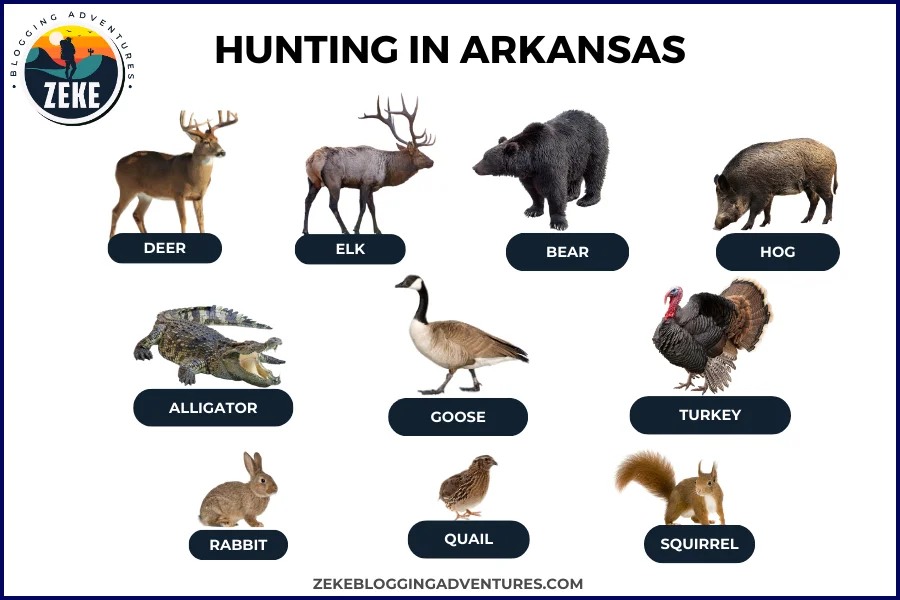
What Can You Hunt in Arkansas?
Arkansas is known for its plentiful hunting opportunities whether you’re after big game, waterfowl, or small creatures. Deer and elk are the most popularly hunted large animals, with antlers of excellent quality often found in these majestic beasts. Waterfowl hunters flock to Arkansas as it’s a major bottleneck on the Mississippi flyway; ducks and geese being some of the tastiest prey.
Small game animals such as squirrels, rabbits, and quail can also be found throughout this great state – providing an exciting challenge for experienced or novice hunters alike. And don’t forget about bears either! Black bear hunts offer an exhilarating experience that will leave you wanting more every time.
Deer
From white-tailed to mule and black-tailed deer, these majestic creatures can be found in various habitats across Arkansas, from forests to meadows. When out tracking them, however, it’s important that hunters take extra precautions – wear bright colors so you don’t blend into your surroundings, and abide by all regulations set forth by the Arkansas Game and Fish Commission.
Deers are nocturnal animals; they’re most active during nightfall which makes visibility difficult at times – but with careful planning, one can have an enjoyable experience while hunting these beautiful creatures.
When it comes to equipment, having the right gear is essential for success. Make sure you have a quality rifle with accurate sights and that it is properly sighted in before heading out into the field. Also, bring along plenty of ammunition, extra clothing layers, binoculars or spotting scopes for scouting deer from a distance, and food and water for long days spent hunting.
Once you‘re all set up with the necessary permits and gear, it‘s time to find yourself some deer. Scouting ahead of time can help pinpoint areas where deer may be grazing or bedding down during the day. Look for trails or signs of rubbing on trees that may indicate deer activity in an area. Early mornings and late evenings tend to be when deer are most active.
Deer Season in Arkansas
| Zone | Dates | Hunt Type |
| Zone 1, Zone 2, Zone 3, Zone 4, Zone 4A, Zone 5A, Zone 6A, Zone 7, Zone 8 | 23 Sep – 29 Feb | Archery |
| Zone 9, Zone 10, Zone 11, Zone 12, Zone 13, Zone 14, Zone 15, Zone 16, Zone 16A, Zone 17 | 23 Sep – 29 Feb | Archery |
| Zone 1, Zone 2, Zone 3, Zone 4A, Zone 5A, Zone 6, Zone 7, Zone 8, Zone 9, Zone 10 | 21 Oct – 29 Oct | Muzzleloader |
| Zone 11, Zone 12, Zone 13, Zone 14, Zone 15, Zone 16, Zone 16A, Zone 17 | 21 Oct – 29 Oct | Muzzleloader |
| Zone 1, Zone 2, Zone 3, Zone 6, Zone 7, Zone 8, Zone 10, Zone 11 | 09 – 11 Dec | Muzzleloader |
| Zone 1, Zone 2, Zone 3, Zone 6, Zone 7, Zone 8, Zone 10, Zone 11 | 11 Nov – 03 Dec, 26 Dec – 28 Dec | Modern Gun |
| Zone 1, Zone 2, Zone 3, Zone 4, Zone 4A, Zone 5A, Zone 6, Zone 7, Zone 8 | 29 Dec – 31 Dec | Modern Gun (Youth Hunt Antlerless on Private Land) |
| Zone 9, Zone 10, Zone 11, Zone 12, Zone 13, Zone 14, Zone 15, Zone 16, Zone 16A, Zone 17 | 29 Dec – 31 Dec | Modern Gun (Youth Hunt Antlerless on Private Land) |
| Zone 1, Zone 2, Zone 3, Zone 4, Zone 4A, Zone 5A, Zone 6, Zone 7, Zone 8 | 04 Nov – 25 Nov, 06 Jan – 07 Jan | Modern Gun (Special Youth) |
| Zone 9, Zone 10, Zone 11, Zone 12, Zone 13, Zone 14, Zone 15, Zone 16, Zone 16A, Zone 17 | 04 Nov – 25 Nov, 06 Jan – 07 Jan | Modern Gun (Special Youth) |
| Zone 9, Zone 12, Zone 13 | 11 Nov – 17 Dec, 26 Dec – 28 Dec | Modern Gun |
| Zone 16, Zone 16A, Zone 17 | 11 Nov – 28 Dec | Modern Gun |
Elk
Elk hunting in Arkansas is one of the best experiences you can have. With an abundance of resources, it’s a great destination for both experienced and novice hunters alike. The Ouachita Mountains and the Ozark Plateau are home to plentiful elk herds, while public lands such as wildlife management areas and national forests provide ample opportunities for tracking them down. Private land access is also available through guided hunts on ranches all over the state if that fits your preference better.
For those who want to get out there during peak season, fall months offer some of the most successful hunts due to increased activity levels among elk populations around this time. However, don’t let that discourage you from trying your luck come spring either – with strategic planning, you may be able to bag yourself a trophy.
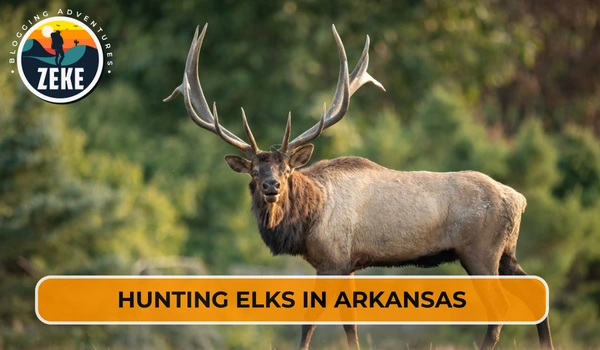
Elk Hunting Season in Arkansas
| Zone | Dates | Hunt Type |
| Public Land | 07 Oct – 08 Oct, 28 Oct – 29 Oct | Youth Hunts |
| 01, 02, 03, 04 Public Land | 02 Oct – 06 Oct, 30 Oct – 03 Nov | Regular Hunts |
| Private Land | 07 Oct – 08 Oct, 28 Oct – 29 Oct | Youth Hunts (Antlerless elk only) |
| Private Land | 02 Oct – 06 Oct, 30 Oct – 03 Nov | Regular Hunts |
Bear
The black bear is the only species of bear found in Arkansas, and it inhabits the timberlands of the western half of the state. Bears are usually most active during dusk and dawn, so it’s important to plan your hunt accordingly. You should also check with the local game warden for any special regulations before heading out.
When hunting bears, hunters should use caution as they can be unpredictable and dangerous if startled or cornered. It’s important to make sure you’re familiar with all safety protocols before heading out into the woods.
Once you’ve located a bear, you can use a variety of weapons such as bows, muzzleloaders, and firearms to take down your quarry. Most hunters prefer using rifles or pistols because they offer more accuracy than other weapons.
Bear hunting season typically runs from October through February each year, so plan accordingly if you want to take part in this thrilling activity. And don’t forget to bring along some friends as well; bear hunting can be even more fun when shared with others.
Bear Season Arkansas
| Zone | Dates | Weapon |
| 01, 02 | 13 Sep – 30 Nov | Archery |
| 01, 02 | 21 Oct – 29 Oct | Muzzleloader |
| 01, 02 | 04 Nov – 05 Nov | Modern Gun Bear Hunt |
| 01, 02 | 11 Nov – 30 Nov | Modern Gun |
| 03 | 09 Dec – 15 Dec | Modern Gun |
| 04 | 09 Dec – 15 Dec | Modern Gun |
| 05 | 25 Nov – 03 Dec | Modern Gun |
| 5A | 18 Nov – 03 Dec | Modern Gun |
Hogs
Hunting hogs in Arkansas presents an exciting opportunity for hunters of any skill level. With a sizeable population throughout the state, there’s plenty of game to go around. However, it is essential that you familiarize yourself with local regulations and hunting seasons prior to embarking on your expedition – as some areas require specific daylight hours or may only be hunted in certain public lands.
When looking to land one of these wild hogs, experienced hunters usually opt for still-hunting or stalking techniques; while others prefer using traps or dogs instead. Night-hunting and spotlighting are also popular tactics among veteran hog chasers. Whichever route you take, make sure you’re abiding by all applicable laws so that everyone can enjoy this thrilling sport safely and responsibly.
Hogs Season
| Species | Dates | Notes |
| Feral Hogs | 01 Jan – 31 Dec | No Limit. Private |
| Feral Hogs | 01 Oct – 08 Jan | No Limit. Any weapon can be used. |
| Feral Hogs | 01 Nov – 31 Dec | No Limit. Public Archery |
Alligator
Arkansas is home to an abundant population of alligators, making it a popular destination for hunters looking to bag a gator. Alligator hunting in Arkansas is regulated by the Arkansas Game & Fish Commission and requires a valid alligator hunting license. Also, certain areas have specific regulations so hunters should become familiar with the rules before heading out.
Alligator hunting in Arkansas typically takes place from mid-August through late September. During this time, licensed hunters can hunt both day and night using either bow or harpoon techniques. Harpooning is generally considered the more successful technique as it allows the hunter to be more precise when targeting a gator. To increase their chances of success, hunters often set up “blinds” near likely areas for alligators and wait for one to wander by.
When a successful hunt has been made, hunters must document the catch in accordance with state regulations. This includes measuring and weighing the animal in order to determine if it meets the size requirements for harvesting. If so, then the harvested gator must be reported within 24 hours of it being taken and the hide must be tagged before processing or sale.
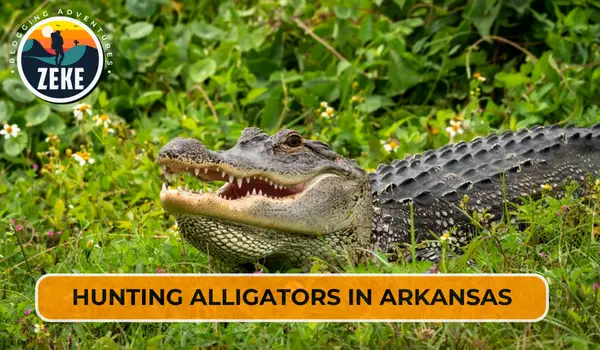
Alligator Season in Arkansas
| Zone | Dates | Hunt Method |
| Zone 1, Zone 3 | 15 Sep – 18 Sep | Public Land |
| Zone 1, Zone 3 | 22 Sep – 25 Sep | Public Land |
| Zone 1, Zone 2, Zone 3 | 15 Sep – 18 Sep | Private Land |
| Zone 1, Zone 2, Zone 3 | 22 Sep – 25 Sep | Private Land |
Goose
As an experienced hunter, Arkansas is the perfect place to head for some of the best waterfowl hunting in the country. Home to flocks of Canada geese, snow geese and more species, you won’t be short on opportunities to explore nature while chasing these majestic birds.
Before setting out though, make sure you have all your gear ready – from quality waterproof boots or waders that’ll keep you dry during wet terrain; decoys and calls that’ll help draw in flocks; and camouflaged clothing so as not to be spotted by other hunters easily.
Public land can also be found across Arkansas where goose hunting is allowed – however, it’s important to check with local wildlife authorities before going ahead with your plans as certain areas may require special permission due to restrictions related to conservation efforts, etc. With a little research, you are sure to find ideal habitats for spotting large groups of migrating geese.
Goose Season
| Goose Type | Dates | Bag Limit |
| Canada Goose | 01 Sep – 15 Oct | 5 per day |
| Canada Goose | 18 Nov – 26 Nov, 09 Dec – 23 Dec, 27 Dec – 31 Jan | 2 per day |
| White-fronted Goose | 28 Oct – 10 Nov, 18 Nov – 26 Nov | 3 per day |
| White-fronted Goose | 09 Dec – 23 Dec, 27 Dec – 31 Jan | 3 per day |
| Snow Goose | 28 Oct – 10 Nov, 18 Nov – 26 Nov | 20 per day |
| Snow Goose | 09 Dec – 23 Dec, 27 Dec – 31 Jan | 20 per day |
Squirrel
For those just starting to hunt squirrels, Arkansas is the place to be! With an abundance of gray, fox, and red squirrels around in fall and winter months you’re sure to bag your limit. The Arkansas Game & Fish Commission (AGFC) has resources available for beginners that cover regulations, seasons, limits, safety tips, and more.
The most successful way of hunting these bushy-tailed critters is with a shotgun loaded with either No. 6 or No. 7½ shot – however, it’s important to note state law prohibits using centerfire rifles when hunting in Arkansas. Don’t forget about archery equipment like recurve bows and longbows too – although this method might take a bit more practice than shooting out of a gun before heading into the woods. It can absolutely yield great results if done correctly.
Squirrel Season
| Species | Dates | Bag Limit |
| Squirrel (Statewide) | 15 May – 29 Feb | 12 per day |
Turkey
Turkey hunting in Arkansas is a thrilling experience for hunters of all ages. With a healthy population of wild turkeys in the state, you are often able to find a successful hunt.
The season for turkey in Arkansas runs from mid-March to mid-May with bag limits varying depending on the county you’re hunting in. There are also some specific regulations that apply to certain areas, so be sure to check local regulations before planning your trip.
In addition to having good luck finding and harvesting a turkey during your hunt, it’s also important to know how to properly call turkeys. While there are a variety of techniques used by experienced hunters, it’s best for beginners to stick with basic calls such as yelps, clucks, and purrs. In addition to calling, decoys can also be used as an effective way of attracting turkeys into range.
When it comes time for the actual shot, make sure you’re using the proper shotgun gauge and load size for your desired results. The most popular shells used for turkey hunting are #4 or #5 lead shot with 1 1/8 ounce of shot being the ideal weight for most bird sizes found in Arkansas.
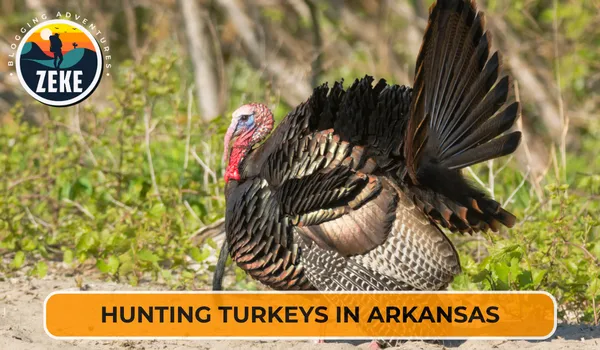
Turkey Season Arkansas
| Zone | Dates | Bag Limit |
| 1, 2 | 06 Apr – 07 Apr | 1 |
| 1 | 15 Apr – 23 Apr | 1 |
| 2 | 15 Apr – 5 May | 2 |
Rabbit
Rabbit hunting in Arkansas is a great way to get outdoors and explore the Natural State’s diverse terrain. With the season running from early September through February, there’s plenty of time to enjoy all that rabbit hunting has to offer. It’s important for hunters to make sure they familiarize themselves with state regulations such as daily bag limits and size restrictions on harvested rabbits, as well as the requirement that only non-toxic shots can be used when using a shotgun.
You’ll need some key gear before setting off; waterproof clothing will keep you dry while out in the field, along with good boots for both comfort and protection against rough terrain.
Don’t forget your firearm and ammunition too. You may also want decoys or lures so you can attract more rabbits into range – just remember not to exceed any limits set by game laws.
Rabbit Season
| Species | Dates | Bag Limit |
| Rabbit (Statewide) | 01 Sep – 29 Feb | 8 per day |
Quail
Arkansas boasts a wide variety of habitats ranging from the Ouachita Mountains to the Mississippi Alluvial Plain, ensuring that there’s something for every hunter. Whether you’re after Bobwhite or Blue Quail, Arkansas has plenty of great spots to get your hunt started.
When it comes to gear, Arkansas hunters can choose from a wide array of shotguns and loads suited for quail hunting. The best shotgun for the job is typically a semi-automatic 12-gauge with an improved cylinder choke tube and 1-ounce shotshells loaded with #7 shot. It’s also important to bring along camouflage clothing, ear protection, blaze orange vests or hats, binoculars, and a hunting license.
As far as locations go, some of the best spots in Arkansas are found in southwestern parts of the state where there are large tracts of agricultural land and grasslands ideal for quail hunting. Alternatively, you can look for private leases in areas such as Sweet Home and Yellville where there are also native populations of Bobwhites.
Quail Season
| Species | Dates | Bag Limit |
| Northern Bobwhite Quail | 01 Nov – 5 Feb | 6 per day |
Furbearer Season
| Species | Dates | Bag Limit |
| Weasel | Closed | ——- |
| Badger | Closed | ——- |
| Beaver | 01 Sep – 31 Mar | Unlimited |
| Mink | 01 Sep – 29 Feb | ——- |
| Striped Skunk | 01 Jan – 31 Dec | Unlimited |
| Opossum | 01 Jan – 31 Dec | Unlimited |
| Red Fox | 01 Sep – 29 Feb | 2 |
| Gray Fox | 01 Sep – 29 Feb | 2 |
| Raccoon | 01 Jan – 31 Dec | Unlimited |
| Bobcat | 01 Sep – 29 Feb | 2 |
| Nutria | 01 Sep – 31 Mar | Unlimited |
| River Otter | 12 Nov – 29 Feb | 2 |
| Spotted Skunk | Closed | ——- |
| Muskrat | 01 Sep – 29 Feb | ——- |
| Coyote | 01 Jan – 31 Dec | Unlimited |
Waterfowl Season
| Species | Dates | Bag Limit |
| Teal | 15 Sep – 30 Sep | 6 per day |
| Duck | 18 Nov – 26 Nov | 6 per day |
| Duck | 09 Dec – 23 Dec | 6 per day |
| Duck | 27 Dec – 31 Jan | 6 per day |
| Coot | 18 Nov – 26 Nov, 09 Dec – 23 Dec, 27 Dec – 31 Jan | 15 per day |
| Merganser | 18 Nov – 26 Nov, 09 Dec – 23 Dec, 27 Dec – 31 Jan | 5 per day |
Crow Season
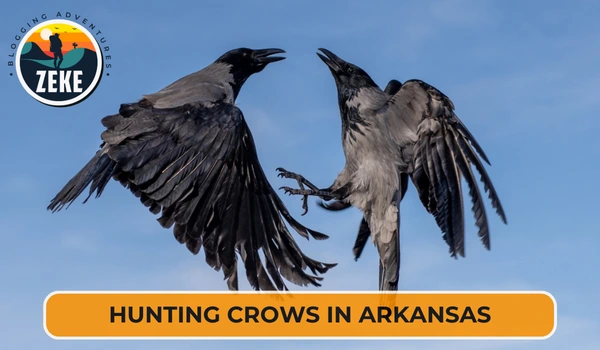
| Species | Dates | Bag Limit |
| Crow | 01 Sep – 19 Feb | No Limit |
Dove Season
| Species | Dates | Bag Limit |
| Mourning Dove | 02 Sep – 22 Oct | 15 |
| Mourning Dove | 08 Dec – 15 Jan | 15 |
| White-Winged Dove | 02 Sep – 22 Oct | 15 |
| White-Winged Dove | 08 Dec – 15 Jan | 15 |
| Eurasian Collared-Dove | 02 Sep – 15 Jan | No Limit |
Arkansas Hunting License Information
If you’re looking to hunt in Arkansas, you’ll need the right license. It’s easy – just follow these steps and you’ll be ready for your next big adventure!
First, decide what kind of license is best suited for the type of hunting activity that you plan on doing. Different licenses are available depending on game species and regulations should also be checked prior to purchasing a permit.
After determining which one works for you, head over to purchase it through either the AGFC website or an authorized vendor near your location – don’t forget your ID as proof of residency may be required at checkout.
Before hitting up any spots though, all hunters must complete hunter education which covers topics such as wildlife identification & conservation along with firearm safety – both online & instructor-led courses are available easily enough.
Once done with that step too – congrats! You’re now officially licensed and ready to hit up some hot spots out there in Arkansas’ great outdoors.
Where Can You Hunt in Arkansas?
If you are looking for the best places to hunt in Arkansas, then we have got you covered. Let’s check out some of the top hunting places in The Natural State.
Public Hunting Places in Arkansas
When it comes to public hunting land in Arkansas, there are a few prime spots that stand out. The Ouachita National Forest is the largest in the state with 1.8 million acres of diverse terrain. It’s an ideal spot for hunters looking to bag deer, elk, black bear, or wild turkey.
Another great option is Buffalo National River – a 135-mile stretch of gorgeous wilderness and plenty of wildlife like deer and turkey ready for harvest if you know where to look!
Ozark-St Francis National Forest offers over 1.2 million acres filled with all kinds of game from birds to large mammals – perfect for both hunting and hiking trips alike.
White River National Wildlife Refuge provides stellar duck hunting opportunities on its 150K acre property teeming with waterfowl year round making it an irresistible destination for any avid hunter worth their salt.
Some more great public places for hunting in Arkansas are Provo WMA, Big Timber WMA, Cherokee WMA, Howard County, and Casey Jones WMA.
Private Hunting Places in Arkansas
Hunting on private land in Arkansas is highly sought after due to its lack of crowds. This means that animals are less spooked, leading to a much more successful hunting experience than anywhere else. In the past, accessing this kind of land was quite a hassle – requiring membership fees, guides or even door-knocking.
Nowadays, however, it’s becoming easier and more affordable for everyone who wants to reap the rewards of what private hunting has to offer. With plenty of options available at your fingertips, you can easily get out there and enjoy an unforgettable day in nature.
